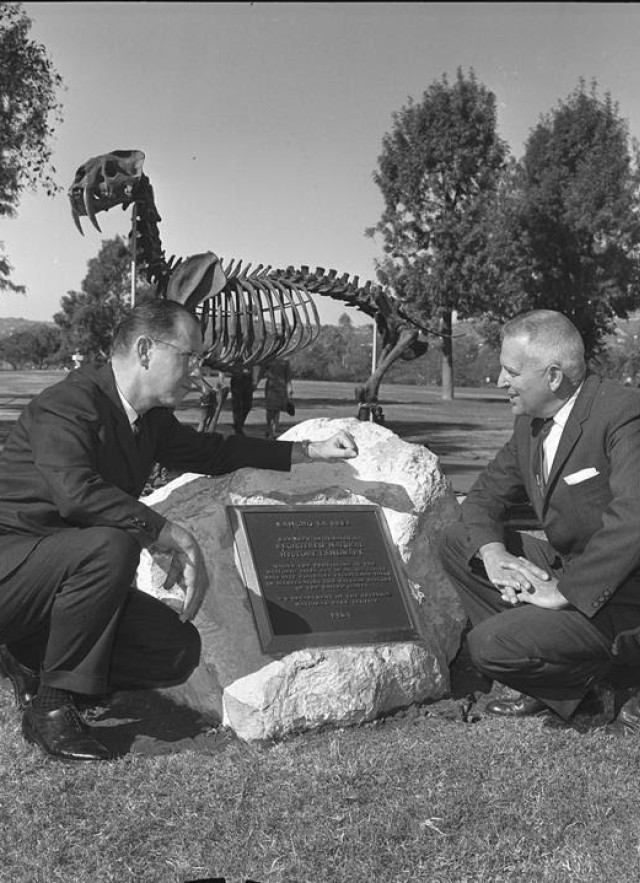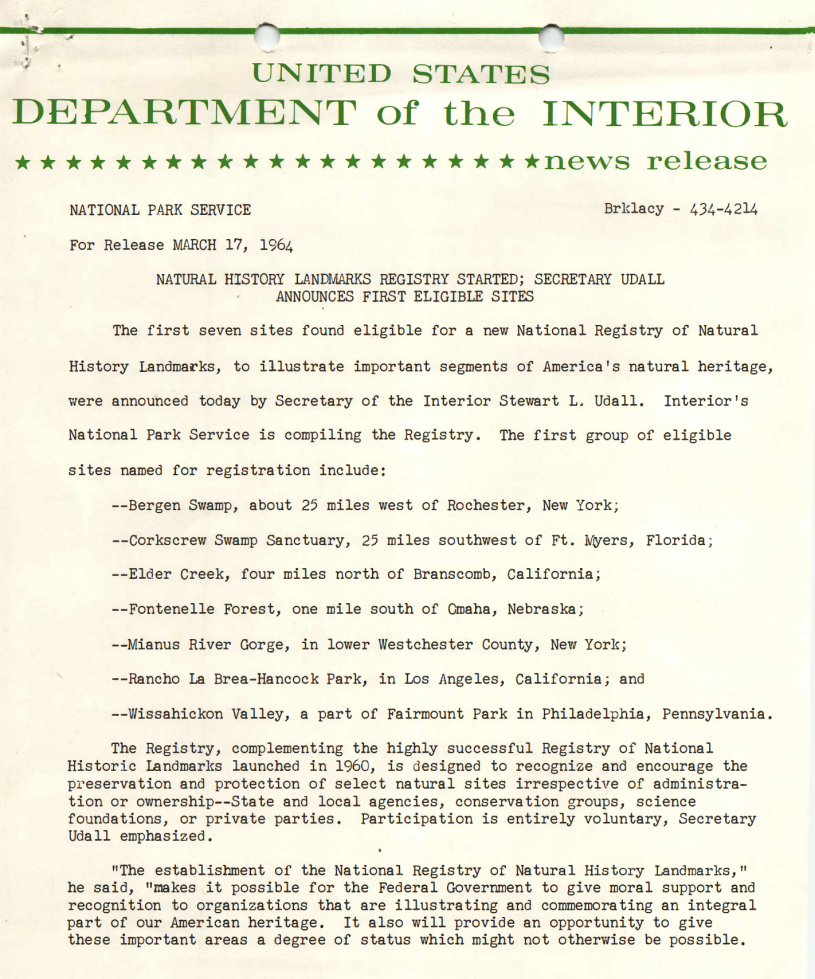A Landmark Anniversary for La Brea Tar Pits
Mark the 60th anniversary of La Brea Tar Pits' designation as a National Natural Landmark with some vintage photography.

Published March 6, 2024
In honor of Rancho La Brea’s 60th anniversary as a National Natural Landmark, NHMLAC is happy to share some vintage documentation of the original milestone moment.
Now known more colloquially as La Brea Tar Pits, Rancho La Brea was one of the first National Natural Landmarks designated by the Department of the Interior on March 7, 1964. Alongside six other locations, Rancho La Brea was deemed significant due to its “natural quality and character, degree of dissimilarity to other sites, importance to education and science, reasonable invulnerability to deterioration and destruction, practicable size, availability and accessibility, and sympathetic and responsible ownership.”
The other landmarks designated in the first batch were New York’s Bergen Swamp, Florida’s Corkscrew Swamp Sanctuary, California’s Elder Creek, Nebraska’s Fontenelle Forest, New York’s Mianus River Gorge and Pennsylvania’s Wissahickon Valley.
“The establishment of the National Registry of Natural History Landmarks makes it possible for the federal government to give moral support and recognition to organizations that are illustrating and commemorating an integral part of our American heritage,” Secretary of the Interior Stewart Udall said at the time. "It also will provide an opportunity to give these important areas a degree of status which might not otherwise be possible.
Additionally, here’s what the Department of the Interior had to say about Rancho La Brea and Hancock Park back in 1964.
“This metropolitan park contains several pits of natural asphalt in which Pleistocene animals became entrapped in their quest for fresh water. The pits are world-famous as the source of the largest and most diverse collection of Pleistocene fossils ever found and studied. Among the many fossils preserved are the ground sloth, saber-toothed tiger, and mammoth. These pits were discovered during the course of early Spanish explorations in this section of California.”
See the first page of the memo below:
